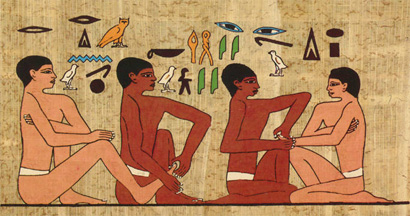|
Waterdance
WaterDance or Wata (abbreviation from the German ''WasserTanzen'') is a type of aquatic therapy which was developed in Switzerland independently of Watsu. While wearing nose clips, a person is gently guided underwater, pulled, swayed, and "flown" while being regularly brought to the surface for breath. Overview WaterDance (also known as Wasser Tanzen or WATA), developed by Arjana BrunschwilerDull, H. 2008. Watsu: freeing the body in water, 4th edition. Watsu Publishing. p.180. . and Aman Schroter in the 1980s, has been called "an underwater three-dimensional journey where time and space lose their meaning". WaterDance emphasizes gentle flowing movement underwater. After being stretched and relaxed at the surface, the receiver is given a noseclip, to prevent water from entering the nasal passages, and then gradually guided entirely underwater. Touch or movement signals are used to communicate when the receiver is to be submerged, and the therapist carefully times submersion to ... [...More Info...] [...Related Items...] OR: [Wikipedia] [Google] [Baidu] |
Watsu
Watsu is a form of aquatic bodywork used for deep relaxation and passive aquatic therapy. Watsu is characterized by one-on-one sessions in which a practitioner or therapist gently cradles, moves, stretches, and massages a receiver in chest-deep warm water. Watsu, originally developed by Harold Dull at Harbin Hot Springs, California in the early 1980s, combines elements of muscle stretching, joint mobilization, massage, Shiatsu, and dance, performed in chest-deep warm water (around 35°C = 95°F). The receiver is continuously supported by a practitioner or therapist while being backfloated, rhythmically cradled, moved, stretched, and massaged.Dutton, M. 2011. Orthopaedics for the physical therapist assistant. Jones & Bartlett Learning. p 187. (Watsu) . Schoedinger, P. 2011. Watsu in aquatic rehabilitation. pp 137-153, Chapter 5 In: Becker, BE and Cole, AJ (eds). Comprehensive aquatic therapy, 3rd edition. Washington State University Press. .Jamison, L. 2009. Watsu. pp 117-128, C ... [...More Info...] [...Related Items...] OR: [Wikipedia] [Google] [Baidu] |
Massage
Massage is the manipulation of the body's soft tissues. Massage techniques are commonly applied with hands, fingers, elbows, knees, forearms, feet or a device. The purpose of massage is generally for the treatment of body stress or pain. In European countries, a person professionally trained to give massages is traditionally known as a masseur (male) or masseuse (female). In the United States, these individuals are often referred to as massage therapists, because they must be certified and licensed as "licensed massage therapists". In professional settings, clients are treated while lying on a massage table, sitting in a massage chair or lying on a mat on the floor. There are many different modalities in the massage industry, including (but not limited to): deep tissue, manual lymphatic drainage, medical, sports, structural integration, Swedish, Thai and trigger point. Etymology The word comes from the French 'friction of kneading', which, in turn, comes either from the A ... [...More Info...] [...Related Items...] OR: [Wikipedia] [Google] [Baidu] |
Massage
Massage is the manipulation of the body's soft tissues. Massage techniques are commonly applied with hands, fingers, elbows, knees, forearms, feet or a device. The purpose of massage is generally for the treatment of body stress or pain. In European countries, a person professionally trained to give massages is traditionally known as a masseur (male) or masseuse (female). In the United States, these individuals are often referred to as massage therapists, because they must be certified and licensed as "licensed massage therapists". In professional settings, clients are treated while lying on a massage table, sitting in a massage chair or lying on a mat on the floor. There are many different modalities in the massage industry, including (but not limited to): deep tissue, manual lymphatic drainage, medical, sports, structural integration, Swedish, Thai and trigger point. Etymology The word comes from the French 'friction of kneading', which, in turn, comes either from the A ... [...More Info...] [...Related Items...] OR: [Wikipedia] [Google] [Baidu] |
Healing Dance
Massage is the manipulation of the body's soft tissues. Massage techniques are commonly applied with hands, fingers, elbows, knees, forearms, feet or a device. The purpose of massage is generally for the treatment of body stress or pain. In European countries, a person professionally trained to give massages is traditionally known as a masseur (male) or masseuse (female). In the United States, these individuals are often referred to as massage therapists, because they must be certified and licensed as "licensed massage therapists". In professional settings, clients are treated while lying on a massage table, sitting in a massage chair or lying on a mat on the floor. There are many different modalities in the massage industry, including (but not limited to): deep tissue, manual lymphatic drainage, medical, sports, structural integration, Swedish, Thai and trigger point. Etymology The word comes from the French 'friction of kneading', which, in turn, comes either from the A ... [...More Info...] [...Related Items...] OR: [Wikipedia] [Google] [Baidu] |


